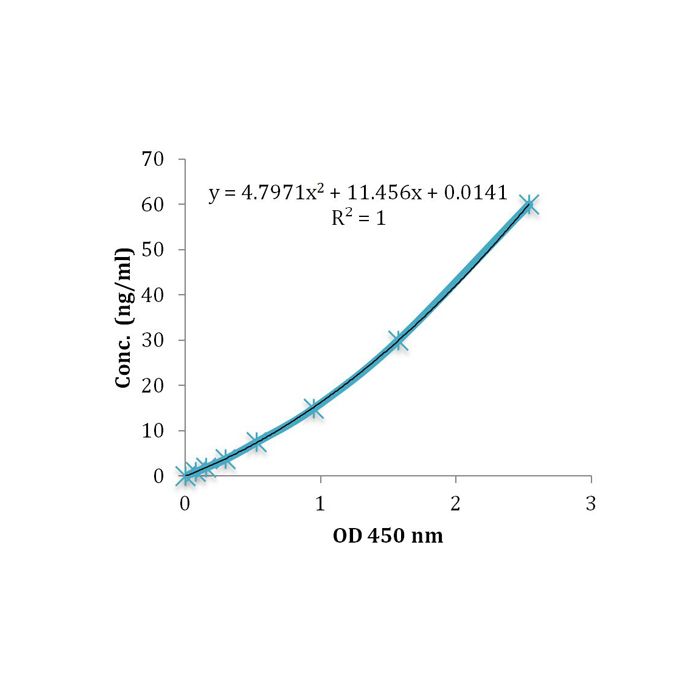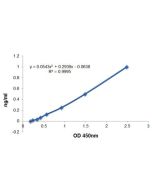Cookie Policy: This site uses cookies to improve your experience. You can find out more about our use of cookies in our Privacy Policy. By continuing to browse this site you agree to our use of cookies.
AdipoGen Life Sciences
Zinc-α-2-glycoprotein (human) TurboELISA Kit

| Product Details | |
|---|---|
| Synonyms | Zn-α-2-GP; Zn-α-2-Glycoprotein; ZAG; ZA2G; AZGP1; ZNGP1 |
| Product Type | Kit |
| Properties | |
| Application Set | Quantitative ELISA |
| Specificity | Detects human Zinc-α-2-glycoprotein. Does not detect mouse Zinc-α-2-glycoprotein. |
| Crossreactivity | Human |
| Quantity | 1 x 96 wells |
| Sensitivity | 0.23 ng/ml |
| Range | 0.9375 to 60 ng/ml |
| Sample Type |
Cell Culture Supernatant Plasma Serum |
| Assay Type | Sandwich |
| Detection Type | Colorimetric |
| Other Product Data | TRADEMARKS - TurboELISA™ and Turbo-coated Plate™ are Trademarks of Adipogen Life Sciences. |
| Shipping and Handling | |
| Shipping | BLUE ICE |
| Short Term Storage | +4°C |
| Long Term Storage | +4°C |
| Handling Advice |
After standard reconstitution, prepare aliquots and store at -20°C. Avoid freeze/thaw cycles. Plate and reagents should reach room temperature before use. |
| Use/Stability | 12 months after the day of manufacturing. See expiry date on ELISA Kit box. |
| Documents | |
| Manual |
 Download PDF Download PDF |
| MSDS |
 Download PDF Download PDF |
| Product Specification Sheet | |
| Datasheet |
 Download PDF Download PDF |
This assay is a less than 1 hour sandwich Enzyme Linked-Immunosorbent Assay (ELISA) for quantitative determination of human Zinc-α-2-glycoprotein in biological fluids. Zinc-α-2-glycoprotein (ZAG) was first identified in the 1960s, and it's name derives from its precipitation from human plasma upon the addition of zinc salts. ZAG has since been found in secretory epithelial cells and in a range of body fluids. ZAG is identical to a lipid mobilizing factor isolated from the urine of patients with cancer cachexia and stimulates lipolysis in in vitro and in vivo experiments. Due to its expression in, and secretion from adipocytes, ZAG is considered an adipokine. Recently, the clinical significance of ZAG has been clarified. ZAG expression in adipocytes is inversely related to fat mass, thus it is intimately involved in the maintenance of body weight in mice and humans. Epidemiological studies have uncovered an association between ZAG and plasma cholesterol. The non-synonymous single nucleotide polymorphism rs4215 in ZAG is associated with plasma cholesterol and obesity. Structurally ZAG possesses a class I major histocompatibility complex (MHC) protein fold. It is distinct from other members of this protein family in that it is soluble, rather than being anchored to plasma membranes, and it associates with prolactin inducible protein rather than β2-microglobulin. Similar to peptide antigen-presenting class I MHC molecules, ZAG possesses an open apical groove between its α1 and α2 domain helices.
- Development of a Dynamic Multi-Protein Signature of Postoperative Delirium: S.M. Vasunilashorn, et al.; J. Gerontol. A Biol. Sci. Med. Sci. 74, 261 (2019)







